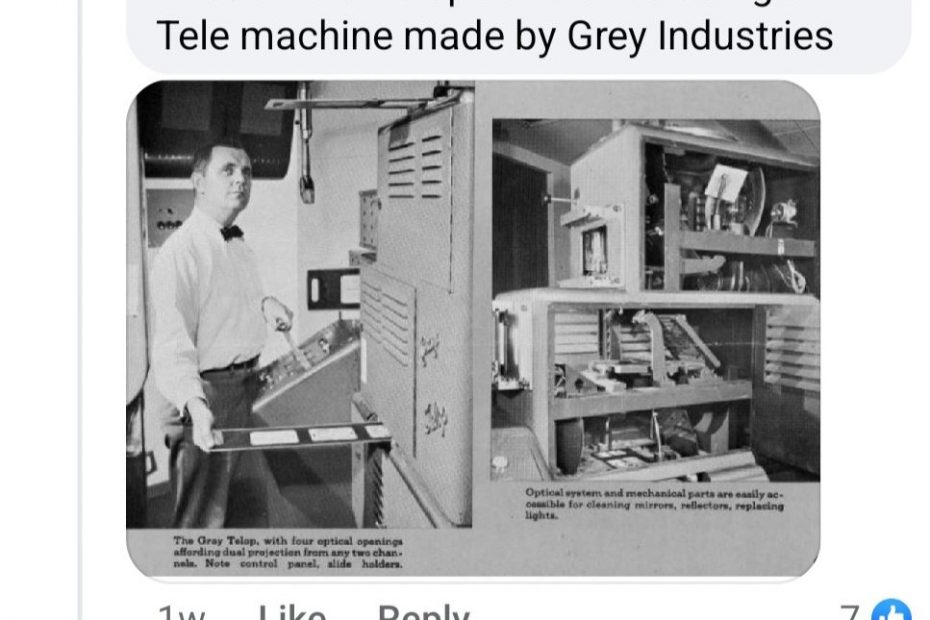I did not know I was born during the heyday of the Telop machine. In fact, in 2016 I published a Daily Heller about what I termed “title cards” designed by Georg Olden, who I wrote about last Friday, unaware that they had a technical name.
Telop is a an early media term—the Japanese word for “television program logo” or “title graphics.” Telop is also an optical machine produced by Gray [not Grey] Industries, used to display various text information on the screen during a TV program, such as the title, subtitles, captions or credits.
Recently, I was introduced to the Eyes of a Generation Facebook page (seen above), and down the rabbit hole I went. In 2014, the full Eyes of a Generation website published vintage (circa 1955) Telop cards from the Gady Reinhold Collection. Reinhold, an associate director at CBS, lived through many technology changes—from static cards to flying logos—and has been responsible for making sure all the visual assets are broadcast on time.
I recently spoke to Gady about his 52 years at CBS, which when he arrived had one machine remaining. “It was kike a light box projection, he said. “A light source, mirror and lens. Similar to an overhead projector.” The 5″ x 7″ title cards fit into a metal tray with six openings for different cards reflected on a mirror that was captured by a TV camera lens, which allowed for dissolves.
All the work was done in a “telecine room”, where an army of craftsmen converted movie content to TV and video. Gady says something was always happening in real time — commercials, show titles, credits — all the components were synced and broadcast to millions of viewers.
Some of the cards were designed in hours, others in less time. Here are some of the 130 telop cards frin CBS and NBC in New York, gifted to Leslie E Barras and posted on Eyes of a Generation.
In 1958 to 1975 NBC used what they called “the snake logo”.
